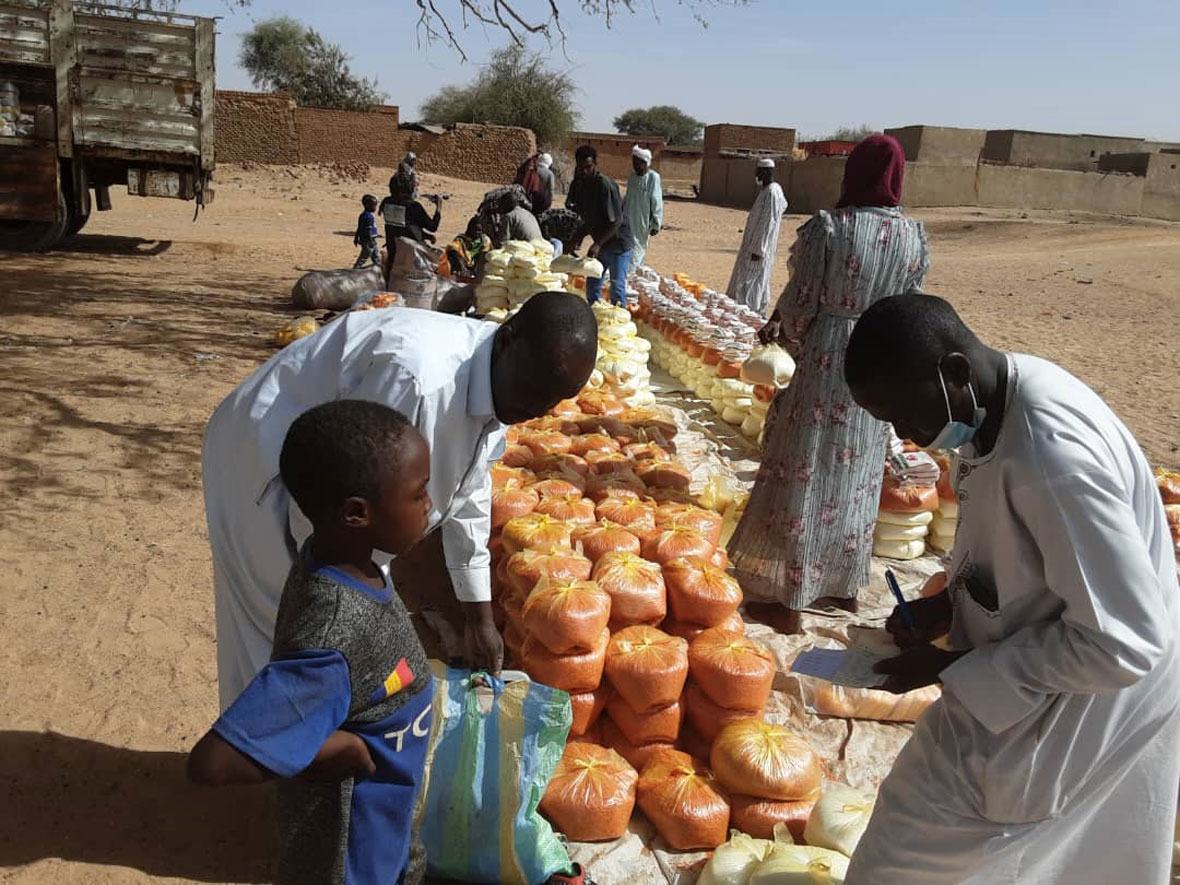Latest hunger data spotlights extent of famine risk in Gaza, Sudan and beyond
Dangerous levels of acute hunger affected a staggering 281.6 million people last year – the fifth year in a row that food insecurity has worsened – heightening growing fears of famineand “widespread death” from Gaza to Sudan and beyond, UN agencies warned on Wednesday.
According to the latest Global Report on Food Crises, more than one in five people in 59 countries faced acute food insecurity in 2023, compared with around just one in 10 in 48 countries in 2016.
“When we talk about acute food insecurity, we are talking about hunger so severe that it poses an immediate threat to people's livelihoods and lives. This is hunger that threatens to slide into famine and cause widespread death,” said Dominique Burgeon, Director of the UN Food and Agriculture Organization (FAO) Liaison Office in Geneva.
COVID-19 threshold
The report – a joint initiative involving FAO, the UN World Food Programme (WFP) and the UN Children’s Fund (UNICEF) – found that although the overall percentage of people defined as dangerously food insecure last year was 1.2 per cent lower than in 2022, the problem has worsened significantly since the COVID-19 crisis.
When the coronavirus hit in late 2019, around one in six people in 55 countries faced worrying food insecurity levels, compared with one in five just a year later, the Global Report on Food Crises indicates.
‘People clearly dying of hunger in Gaza’
Food crises escalated alarmingly in 2023, the report’s authors noted, citing particular concerns over Gaza and Sudan today “where people are clearly dying of hunger”, said Gian Carlo Cirri, WFP Director, Geneva office.
After nearly seven months of Israeli bombardment, “people cannot meet even the most basic, food needs. They have exhausted all coping strategies, like eating animal fodder, begging, selling off their belongings to buy food. They are most of the time destitute and clearly some of them are dying of hunger,” Mr. Cirri said.
The only way to halt the famine is to ensure daily deliveries of food supplies “in a very short time”, the WFP official told journalists in Geneva.
“We've mentioned the necessity to rebuild livelihoods, to address root causes and so on. But, in the immediate time, like tomorrow, we really need to significantly increase our food supplies. This means rolling out massive and consistent food assistance in conditions that allow humanitarian staff and supplies to move freely and (for) affected people to access safely the assistance.”
‘Closer by the day to famine’
The new warning on Gaza is in line with repeated dire assessments from respected food insecurity experts who issued an alert that famine is likely “anytime” between now and May 2024 in northern governorates.
“We are getting closer by the day to a famine situation. Malnutrition among children is spreading. We estimate 30 per cent of children below the age of two is now acutely malnourished or wasted and 70 per cent of the population in the north is facing catastrophic hunger,” WFP’s Mr. Cirri said. “There is reasonable evidence that all three famine thresholds – food insecurity, malnutrition, mortality – will be passed in the next six weeks.”
Sudan danger
On Sudan, the UN report noted that 20.3 million people – or 42 per cent of the population – struggled to find enough to eat last year, after conflict erupted in April.
This represents the highest number of people in the world facing “emergency” levels of acute food insecurity, or phase four, in line with the Integrated Food Security Phase Classification warning scale, where phase five (IPC5) indicates the highest level of danger.
With only a few weeks left before the beginning of the planting season, humanitarian assistance must be allowed immediately inside and across Sudan to avoid any further deterioration of the situation, the report’s authors insisted.

“What is very concerning for us is that the bulk of those people depend on agriculture for their livelihoods. And that, for example, if you take the Al-Jazeera state, this is a critical state for food production; it's about 50 per cent of the wheat production of Sudan that is coming out of the state,” said FAO’s Mr. Burgeon.
“It is absolutely critical that wherever it will be possible to access the people [that] we provide them with agricultural inputs on time so that they can plant their fields. If those people fail to plant their fields, it means we have to be prepared for massive food assistance requirements until the next harvest next year.”
The report also warned that people in South Sudan, Burkina Faso, Somalia and Mali likely endured the worst levels of food insecurity – IPC 5 – in 2023.
Data were not available for some countries where there have been enduring fears over food crises, including Ethiopia, the report’s authors noted, while also pointing out that in Haiti, 19,200 people identified as IPC5 from September 2022 to February 2023 “no longer faced these conditions for the rest of 2023”.
Around 36 million people in 39 countries faced emergency – IPC4 – levels of acute food insecurity last year, which was four per cent more than in 2022. More than a third of them were in Sudan and Afghanistan.
“Households in this severe situation face large food gaps, which are either reflected in high acute malnutrition rates and excess mortality or mitigated by use of emergency coping strategies,” the Global Report on Food Crises said.
In addition, some 165.5 million people in 41 countries faced crisis – IPC 3 – levels of acute food insecurity and around 292 million people in 40 countries were in IPC2.
Learn more about famine and how it is monitored in our explainer here.
© UN News (2024) — All Rights ReservedOriginal source: UN News
 Global Issues
Global Issues